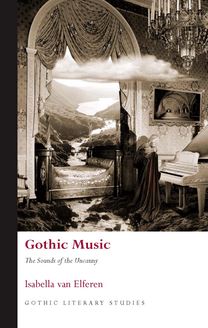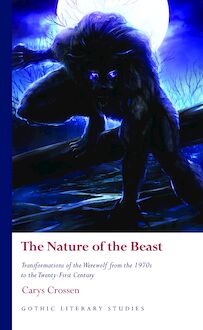-
 Univers
Univers
-
 Ebooks
Ebooks
-
 Livres audio
Livres audio
-
 Presse
Presse
-
 Podcasts
Podcasts
-
 BD
BD
-
 Documents
Documents
-
- Cours
- Révisions
- Ressources pédagogiques
- Sciences de l’éducation
- Manuels scolaires
- Langues
- Travaux de classe
- Annales de BEP
- Etudes supérieures
- Maternelle et primaire
- Fiches de lecture
- Orientation scolaire
- Méthodologie
- Corrigés de devoir
- Annales d’examens et concours
- Annales du bac
- Annales du brevet
- Rapports de stage
La lecture à portée de main
Vous pourrez modifier la taille du texte de cet ouvrage
Découvre YouScribe en t'inscrivant gratuitement
Je m'inscrisDécouvre YouScribe en t'inscrivant gratuitement
Je m'inscrisEn savoir plus
Vous pourrez modifier la taille du texte de cet ouvrage
En savoir plus

Description
Sujets
Informations
| Publié par | University of Wales Press |
| Date de parution | 10 mai 2014 |
| Nombre de lectures | 0 |
| EAN13 | 9781783161935 |
| Langue | English |
| Poids de l'ouvrage | 3 Mo |
Informations légales : prix de location à la page 0,2174€. Cette information est donnée uniquement à titre indicatif conformément à la législation en vigueur.
Extrait
THE GOTHIC IDEOLOGY
SERIES PREFACE
Gothic Literary Studies is dedicated to publishing groundbreaking scholarship on Gothic in literature and film. The Gothic, which has been subjected to a variety of critical and theoretical approaches, is a form which plays an important role in our understanding of literary, intellectual and cultural histories. The series seeks to promote challenging and innovative approaches to Gothic which question any aspect of the Gothic tradition or perceived critical orthodoxy. Volumes in the series explore how issues such as gender, religion, nation and sexuality have shaped our view of the Gothic tradition. Both academically rigorous and informed by the latest developments in critical theory, the series provides an important focus for scholarly developments in Gothic studies, literary studies, cultural studies and critical theory. The series will be of interest to students of all levels and to scholars and teachers of the Gothic and literary and cultural histories.
SERIES EDITORS
Andrew Smith, University of Sheffield Benjamin F. Fisher, University of Mississippi
EDITORIAL BOARD
Kent Ljungquist, Worcester Polytechnic Institute Massachusetts Richard Fusco, St. Joseph s University, Philadelphia David Punter, University of Bristol Chris Baldick, University of London Angela Wright, University of Sheffield Jerrold E. Hogle, University of Arizona
The Gothic Ideology
Religious Hysteria and Anti-Catholicism in British Popular Fiction 1780-1880
Diane Long Hoeveler
UNIVERSITY OF WALES PRESS
CARDIFF
2014
Diane Long Hoeveler 2014
All rights reserved. No part of this book may be reproduced, stored in a retrieval system, or transmitted, in any form or by any means, electronic, mechanical, photocopying, recording or otherwise, without clearance from the University of Wales Press, 10 Columbus Walk, Brigantine Place, Cardiff, CF10 4UP.
www.uwp.co.uk
British Library Cataloguing-in-Publication Data A catalogue record for this book is available from the British Library.
ISBN 978-1-7831-6048-8 e-ISBN: 978-1-78316-193-5
The right of Diane Long Hoeveler to be identified as author of this work has been asserted by her in accordance with sections 77 and 79 of the Copyright, Designs and Patents Act 1988.
Cover image: Illustration from M. G. Lewis, The Monk (1859).
C ONTENTS
List of Illustrations
Acknowledgements
Introduction
1 Anti-Catholicism and the Gothic Ideology: Interlocking Discourse Networks
2 The Construction of the Gothic Nun: Fantasies and the Religious Imaginary
3 The Spectre of Theocracy: Mysterious Monks and Priestcraft
4 The Foreign Threat: Inquisitions, Autos-da-F and Bloody Tribunals
5 Ruined Abbeys: Justifying Stolen Property and the Crusade against Superstition
Epilogue: The Penny Dreadful and the (Almost) Last Gasp of the Gothic Ideology
Notes
Bibliography
Appendix: Anti-Catholic/Gothic Titles
L IST OF I LLUSTRATIONS
Figure 1.1: Gissey de Bordelet, Histoire du P re Jean Baptiste Girard J suite, et de la Delle Marie-Catherine Cadi re , divisee en 32 planches
Figure 2.1: Chapbook version of Eliza, or the Unhappy Nun
Figure 2.2: Frontispiece to The Nun; or, Memoirs of Angelique; An Interesting Ta le
Figure 2.3: Frontispiece to The Legends of a Nunnery
Figure 3.1: Frontispiece to Father Innocent
Figure 4.1: Frontispiece to Brompton Revelations
Figure 4.2: Climactic scene from G. W. M. Reynolds s The Bronze Statue, or The Virgin s Kiss
Figure E.1: Mysteries of a London Convent
Figure E.2: Poster advertising the production of Le Diable au Couvent by Eug ne Hugot
A CKNOWLEDGEMENTS
Writing a book is often a lonely and haphazard journey, frequently full of potholes and dead ends. The composition of this book, however, was a pleasure, filled with charming vistas, intriguing interludes, and challenging but exhilarating jaunts into new territory. It is my pleasure here to thank the people who made this trip so enjoyable: Marquette University s Committee on Research awarded me a three-year Way-Klingler Humanities Fellowship to travel to archives and libraries in America and Europe in order to gather the primary texts used here, and for that support I am immensely grateful. In Paris I was hosted by Pascale Sardin at the Institut du Monde Anglophone, Universit Sorbonne Nouvelle - Paris 3, and I would like to thank the audience there for asking me such probing questions during my visit; in Germany I was hosted by Norbert Besch, the man with a treasure trove of Gothic arcana at his fingertips; and in Toulouse I was hosted by Maurice L vy, the late great French Gothicist who allowed me to digitize his French Gothic collection before it was shipped to the University of Virginia in 2012. In England, I was hosted by Chloe Chard and twice by Nora and Keith Crook, and I will always be grateful for their hospitality and kindness to me.
The scholarly Gothic/Romantic community has embraced my work and made me feel particularly supported. Special thanks go to Robert Miles, David Punter, Anne Williams, Steve Bruhm, Bill Hughes, Andrew Smith, Avril Horner, Sue Zlosnik, Dale Townshend, Angela Wright and Tina Morin. Colleagues who have read my work or have always been generous with their time are Stephen Behrendt, Marshall Brown, Fred Burwick, Benjamin Colbert, David Collings, Jeff Cass, Jeff Cox, Gary Dyer, Nancy Goslee, Jonathan Gross, Nicholas Halmi, Regina Hewitt, Jeff Kahan, Gary Kelly, John Mahoney, Victoria Nelson, Richard Sha, Douglas Thomson, Jack Voller and Judith Wilt. I am particularly grateful to David Salter and Marie L ger-St-Jean for reading drafts of this work at an early stage and offering helpful advice and encouragement. Several sections of this book were originally presented at conferences held by the British Association of Romantic Studies, the International Gothic Association, the International Conference on Romanticism, the Humanities Center at DePaul University, and the North American Society for the Study of Romanticism.
Scholars and librarians who have helped me track down images and references and have gone above and beyond in answering my frequent queries are John Adcock, Elizabeth James, Louis James, Andrea Lloyd, Michael Ferber, Michael Gavin, Justin Gilbert, Steve Holland, Denis Paz, Elizabeth Denlinger, Patrick Scott, John Selby, Nancy F. Sweet and Stephen Karian. My research assistants at Marquette - Brian Kenna, Abby Vande Walle, Camilia Cenek and Robin Graham - did the hard work of converting digital material to Word files for my use. Rose Fortier transferred most of the chapbooks discussed in this book to the online site, The Gothic Archive . I am immensely grateful for her technical savvy. Joan Sommer at Marquette University s office of interlibrary loan handled more requests than I am sure she cares to remember, and I would like to thank the librarians and curators who were extraordinarily patient when I was such a persistent presence at a variety of libraries: the British Library, Cambridge University Library, the Bodleian Library, Oxford, the Sadleir-Black collection at the University of Virginia Library, the Pforzheimer Collection, the New York Public Library, the Library of Congress, the Bibliot que-Nationale-Richelieu and Tolbiac, and the Biblioth que-mus e de l Op ra-Paris.
I am also indebted to the editors of Religion in the Age of Enlightenment and European Romantic Review for permission to republish materials originally printed in different versions in those venues. At the University of Wales Press, I would like to acknowledge the skilful editorial work of Sarah Lewis and Sian Chapman. Thanks also to Andrew Davidson and Claire Rose at Prepress Projects. I am also immensely grateful to Professor Jerry Hogle of the University of Arizona, who served as the press s external reader and provided astute and very helpful critiques during the publication process. At Marquette, I am grateful for the support of my dean, Fr Philip Rossi, SJ. And, as always, it is a pleasure to thank my beloved and loving family, David, John and Emily Hoeveler.
Introduction
Falsis terroribus Implet [Torture my breast with fictions]
Epistles (Horace, 1749: II. 398)
Getting its history wrong is part of being a nation.
What Is a Nation? (Renan, 1990: 12)
The cover of this book, an illustration from Purkess s 1848 penny dreadful adaptation of Matthew Lewis s vehemently anti-Catholic novel The Monk (1796), depicts very clearly the hysterical energy that was brought to the issue of religion in what was supposedly a progressive era. 1 Representing the climactic moment in the text when the Franciscan monk Ambrosio seizes his sister Antonia by the hair just after raping her in the catacombs beneath his Madrid monastery, the illustration spoke to the general public s pervasive fears about the presence of an increasing number of Catholic clergy in a Britain that was by this time thoroughly invested in a form of nationalistic Protestantism. This scene of a sadistic monk raping, torturing and murdering a young innocent woman (and in this case, unbeknownst to him, his long-lost sister) was continually reprinted in the penny press throughout the century, while depictions of The Monk s perverse and violent attacks on his mother and sister were persistently popular tropes in Gothic texts, so frequently repeated that one marvels at how the populace could not have been quickly sated with their depiction. However, quickly sated they do not seem to have been. Variations on this representation have continued to appear in hundreds of literary texts for over 200 years, seemingly in direct contradiction to claims recently made by Franco Moretti (2009). Using more than 7,000 novels from several different countries published over a 160-year period, Moretti asserts that genres coalesce in fairly regular patterns, and that they shift, absorbing some features of the earlier a
-
 Univers
Univers
-
 Ebooks
Ebooks
-
 Livres audio
Livres audio
-
 Presse
Presse
-
 Podcasts
Podcasts
-
 BD
BD
-
 Documents
Documents
-
Jeunesse
-
Littérature
-
Ressources professionnelles
-
Santé et bien-être
-
Savoirs
-
Education
-
Loisirs et hobbies
-
Art, musique et cinéma
-
Actualité et débat de société
-
Jeunesse
-
Littérature
-
Ressources professionnelles
-
Santé et bien-être
-
Savoirs
-
Education
-
Loisirs et hobbies
-
Art, musique et cinéma
-
Actualité et débat de société
-
Actualités
-
Lifestyle
-
Presse jeunesse
-
Presse professionnelle
-
Pratique
-
Presse sportive
-
Presse internationale
-
Culture & Médias
-
Action et Aventures
-
Science-fiction et Fantasy
-
Société
-
Jeunesse
-
Littérature
-
Ressources professionnelles
-
Santé et bien-être
-
Savoirs
-
Education
-
Loisirs et hobbies
-
Art, musique et cinéma
-
Actualité et débat de société
- Cours
- Révisions
- Ressources pédagogiques
- Sciences de l’éducation
- Manuels scolaires
- Langues
- Travaux de classe
- Annales de BEP
- Etudes supérieures
- Maternelle et primaire
- Fiches de lecture
- Orientation scolaire
- Méthodologie
- Corrigés de devoir
- Annales d’examens et concours
- Annales du bac
- Annales du brevet
- Rapports de stage




















